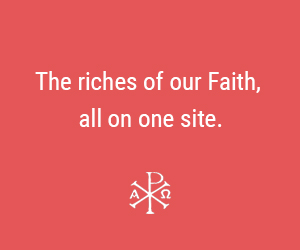On June 20, 2023, the Synod of Bishops published a working document that is supposed to guide the first session of the Synod on the Church, scheduled for October 2023. This “Instrumentum Laboris” (“instrument of work” in Latin), is intended to help the synodal assembly’s 370 members in their reflection on a more welcoming and missionary Church. Among the most salient topics mentioned in the 50-page document is the Church’srelationship with authority, the role of women, and the welcoming of wounded minorities.
The authors of this working document indicate from the outset that it “is not a document of the Church’s Magisterium, nor is it the report of a sociological survey.” A working document of this type is always published before the general assembly of a Synod of Bishops. This text is also not intended to provide “operational indication,” the authors specify.
On the contrary, the document includes more than 130 questions, divided into 15 worksheets, for the participants in the October assembly – bishops, religious and laity – to ponder on.
How to promote women in the Church? How should authority be exercised, or how should ordained ministries be articulated with lay action? How can we integrate wounded minorities such as “divorced and remarried people, people in polygamous marriages, or LGBTQ+ Catholics”? How can we rethink the relationship between the universal and the local, between Western and Latin culture and other cultures?
With this series of questions, the document provides an insight into the vast project launched by Pope Francis to guide the Catholic Church.
How the document is structured
The text, which is more technical and less concrete than the preparatory document for the continental stage of the synod, is divided into two main sections. The first recalls the “fundamental characteristics” of a synodal Church, capable of “walking together.” The second section delineates, through various questions, the elements that have emerged from the reflections carried out from 2021 onwards at local and then continental levels.
The authors of the text warn that it does not want to avoid tensions. “We should not be frightened by them, nor attempt at any cost to resolve them,” the authors assure. The text stresses that a synodal Church is also characterized by the “ability to to manage tensions without being crushed by them.”
The authors also explain that the October assembly is not expected to result in any concrete proposals: “The main objective of the first session will be to outline paths of in-depth study to be carried out in a synodal style.” Only after the second session, in October 2024, will such proposals be presented to the Pope.
A conversation in the Spirit
The working document does, however, make one concrete proposal: a schematic presentation on how to carry out discernment during the Synod. Entitled “Conversation in the Spirit,” this method proposes a spiritual journey alternating moments of silence, prayer and listening, with moments of dialogue and identification of the “steps” that “the Spirit” is calling us to take together. The document promotes this method as a way of guiding participants through the next stages of the synodal process.
The text points out that this method was “discovered” in many local Churches during the first phase of the Synod. “From all continents comes the request that this method may increasingly animate and inform the daily life of the Churches,” the authors explain. This “method” intends first to “communion” and is sometimes referred to as a “Pentecostal moment,” a “synodal method” or “spiritual conversation.”
Conversation in the Spirit is not intended to be “a generic exchange of ideas,” but a “dynamic in which the word spoken and heard generates familiarity, enabling the participants to draw closer to one another,” emphasizes the document. This “hearing together” allows participants to “experience discernment,” to overcome disagreements and to be united in their listening to the Holy Spirit.
We can only speak of a Conversation in the Spirit if there is “a step forward in a precise, often unexpected direction that points to concrete action,” insists the document. The document states that the faithful are not asked “to follow this pattern slavishly,” but to adapt according to each context.
The 4 steps in the Conversation in the Spirit
A diagram in the text explains the method of the Conversation in the Spirit and outlines four stages and four moments of prayer.
1. It begins with a “personal preparation” in prayer with the Holy Spirit to meditate on one’s future contribution on the issue being discerned.
2. Then comes the meeting, which begins with a moment of silence, prayer, and includes listening to the Word of God together. Then each member takes turns speaking, and above all listens attentively to others. This initial exchange is followed by a time of prayer and silence.
3. Then, “each one shares what has resonated most with him or her or what has aroused the most resistance in him or her, allowing himself or herself to be guided by the Holy Spirit.” Each person is called to answer the question “when listening, did my heart burn within me?”
4. After a further period of prayer and silence, a dialogue takes place “on the basis of what has emerged earlier in order to discern and gather the fruit of the conversation in the Spirit.” In particular the text encourages those participating to “recognize the intuitions and convergences” to which the Spirit has led, but also identify “discordances, obstacles and new questions.” The aim is to “allow prophetic voices to emerge,” but also let everyone “feel represented by the outcome of the work.” The process concludes with a final prayer of thanksgiving.


